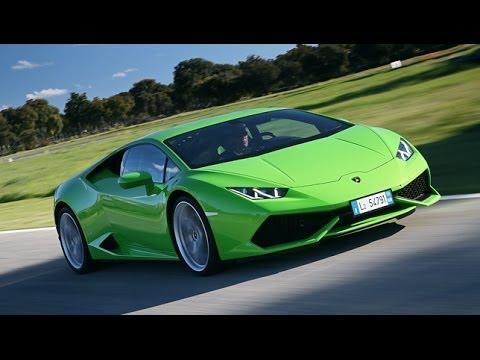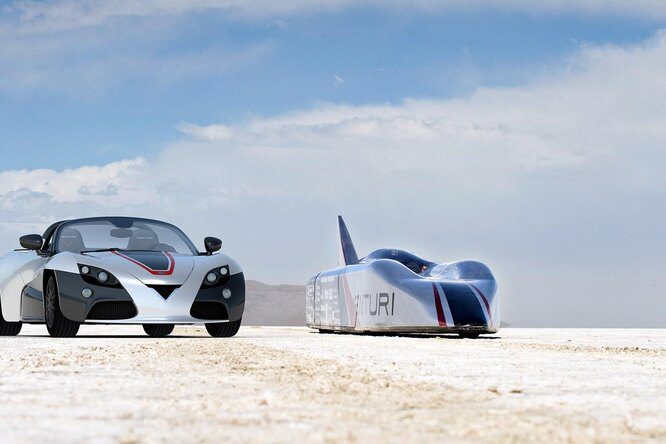
2014 Lamborghini Huracan Review: Road Test
The Lamborghini Huracan is the garlic bread and herb butter in the Italian supercar manufacturer's lineup. Since 14,000, more than 2003 copies of the Gallardo predecessor have been sold worldwide, helping the company move from the brink of extinction to rude health.
Purists were worried about what might happen to Lamborghini when German giant Volkswagen's Audi luxury division acquired the company in 1999. But history will rank it as one of the most remarkable twists and turns in supercar history. Lamborghini sold 10,000 cars in its first 40 years of existence. 20,000 11 cars have been sold in the last XNUMX years.
Like all previous Lamborghini models, the Huracan is named after the famous Spanish fighting bull, but it will need more than just fighting spirit to keep up with today's competition.
A lot depends on the sharp creases on the sides of the Huracan, but its reputation precedes that. Even though it was only introduced a few months ago, it has already received 1500 orders worldwide, which means that if you order one today, it will be delivered in 12 months. We jumped in line to get behind the wheel in Spain before it hits local dealerships in August.
Value
The Huracan is cheaper than the Gallardo it replaces, costing $465,000 per trip, including goods and services tax, luxury car tax, stamp duty and travel expenses.
The standard fare includes Bluetooth phone connectivity, navigation, electric heated seats, front suspension lift kit (to lift the nose off the road at the touch of a button), magnetically controlled suspension (optional in other markets) and carbon ceramic brakes. Their absence is conspicuous by front and rear parking sensors or a reversing camera, which are sold in a $5900 package. Ouch.
Technologies
The frame and bodywork of the Huracan is made primarily of aluminium, but the spine in the middle of the floor and the fire wall between the rear-mounted engine and the cab are made from high-strength carbon fiber. The result is a 10 percent savings in body weight.
However, Lamborghini conveniently forgot to mention that the overall weight of the Huracan after it's all put together increased by 12kg, from 1410kg dry for the Gallardo to 1422kg dry for the Huracan; dry measurement when there are no liquids.
Drive weight - with oil, water and fuel tank - 1532 kg. The net gain of 12kg, despite a 10 percent body frame trim, is due to the installation of a new seven-speed dual-clutch transmission and additional automotive technology. One way to save weight was to remove the indicator stems.
Lamborghini followed the example of Ferrari and equipped the steering wheel with turn signal and wiper buttons. However, it must be said that the Lamborghini switches are more intuitive than those of the Ferrari.
The thumb of the left hand is responsible for the turn signals, the thumb of the right hand is responsible for the wipers. Both can be quickly canceled by pressing the tab inward rather than left or right. A 12.3-inch digital screen that looks like something from a fighter jet replaces analog dials and can be configured in four different display modes.
A steering wheel button with "strada", "sport" and "corsa" settings adjusts the response of the steering, throttle, transmission, suspension and stability control.
The addition of a stop-start system reduces fuel consumption and helps the engine meet Euro VI emission requirements.
Design
Even in the computer age, most cars are built as full-size clay models for final testing before a company takes a deep breath and commits to spending hundreds of millions on a new model.
That's why it's important that Lamborghini designed the Huracan 100 percent on a computer. The only physical models it produced were just that: scaled-down models small enough to fit on a table.
The result is no less impressive. Longer and wider than its predecessor, and with more footprint, the Huracan has hints of a Lamborghini Murcielago V12 on the sides.
Clear lines and elegant use of hexagonal shapes will not leave you indifferent. "We love hexagons," says Filippo Perini, Lamborghini's head of design, with a distinct bent for understatement.
Almost every time you look at the Huracan, you find a new angle or design theme that you didn't notice before.
This may sound dirty, but it's not. It's bold and it's amazing. From the jagged rear vents (for engine cooling) to the aircraft-style cockpit controls to the precious details in the Huracan headlights, this is a concept car brought to life.
The start button valve, inspired by the military aircraft bomb trigger that first appeared on the Lamborghini V12 Aventador, has been improved for the Huracan.
It's made of metal rather than plastic and has a more precise feel when working properly. Unfortunately, on one pre-production car we tested, the metal flap over the starter button dangled.
The reverse lever is made in the form of an aircraft thrust accelerator. I hope the pilot does not get confused, they are in for a shock.
safety
Two frontal airbags (one in the steering wheel, the other in the dashboard) and two "curtains" in the roof to protect against side impacts.
Such supercars would break the budget of independent crash testing bodies such as NCAP, so they are not tested and therefore their results are not published. But they must demonstrate to the authorities that the cars meet minimum safety standards.
Incredibly, the rearview camera (neatly built into the rear bottom panel) and front and rear sensors are $5900 on this $465,000 car. And we think Ford and Holden are unhappy that they didn't put a camera as standard on their family SUVs.
Driving
There are a few sacred cars that apparently shouldn't be criticized lest their owners break their sprocket. The Leyland P76 and Subaru WRX, and just about any Ferrari or Lamborghini, are allegedly banned unless you want to see someone hit the rev limiter.
So with great trepidation, before I tell you everything that's great about the new Lamborghini Huracan, I'll tell you what, erm, isn't perfect.
As fantastic as it may seem to find a flaw in a $465,000 supercar, it is, after all, a man-made machine. And sometimes men can be too smart for their own good.
Despite all the promises made about the optional whistle steering (a $3700 option that adjusts gear ratios below 50 km/h and above 100 km/h), something about the Huracan wasn't quite right.
We tested three different cars on nine laps of a twisty race track and then drove 60km on another. After trying various settings, as we were encouraged, it was hard to find one that didn't want to understeer or run into corners. It's not as good as I remember Gallardo.
One car tested in the middle of the three felt better than the rest. But I can't for the life of me figure out what was different about him. One possibility is that some of the cars had worn tires, while the "good" ones had less.
So, with the proviso that we reserve the final judgment on the steering (which doesn't feel as sharp or intuitive as a Ferrari 458 Italia or Porsche 911 Turbo at the moment), let me deliver the good news.
The seven-speed dual-clutch transmission takes the Huracan to the next level of supercar performance, reducing the time from 0 to 100 km/h by half a second. It's not much when you're testing a Toyota Corolla, but trust me, cutting 0.5 seconds from 3.7 to 3.2 is like having your nose tied to a low-flying rocket.
The other incredible thing, which is almost unbelievable, is that the gear changes are absolutely smooth. You can hear them when the 5.2-liter V10 howls from gear to gear, but there are no more bumps between gear ratios.
Ironically, I miss the Gallardo's brutal shifting, but I wouldn't trade it for the Huracan's performance. Or sound. It's really epic.
The 5.2-litre V10 engine has been redesigned; it now produces 449 kW of power and 560 Nm of torque, 90 percent of which is available just above idle at 1000 rpm. Holy bastard!
As before, in normal mode, the all-wheel drive system sends 30% of the power to the front wheels and 70% to the rear. But if necessary, it can transfer up to 50% of power forward and up to 100% backward.
Best of all, though, you don't have to think about it. The new Huracan has more processing power than ever before and constantly analyzes vehicle (and driver) behavior to make sure mere mortals get the most out of their car. It's Photoshop for drivers, except it instantly fixes your missteps.
Verdict
The Lamborghini Huracan is a worthy successor to the Gallardo and brings a new level of supercar performance to mere mortals.

